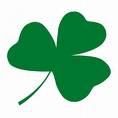Kinsale - Fine Food
Gourmet Capital, Culinary Centre are just two of the titles attributed to Kinsale. The town is certainly famous for its variety of eateries, which have sprung up in recent years, as a result of the enterprise of a few in the '60's and the following close camaraderie of Kinsale's Fine Food Restaurateurs. The Fine Food Festival and our "Taste of Kinsale Breaks" are a great opportunity to experience the wealth of cuisine available in the town.
Desmond Castle International Museum of Wine
Kinsale's International Museum of Wine tells the romantic story of the Irish emigrants who colonised the wine trade throughout the world after being forced to leave their own shores. The museum is located in Desmond Castle, a 15th century Customs House which belonged to the Fitzgerald family.
Kinsale was a designated Wine Port and supplied ships for the Vintage Fleet (forerunner of the British Navy) as far back as 1412. In that year the Vintage Fleet of some 160 vessels plying from Bordeaux included five Irish owned vessels - three of which were from Kinsale and two from Dublin. For more information see the Winegeese website.
In the 17th century Desmond Castle was turned into a prison - its inmates were mainly French and captured at sea so the castle was populartly known as the "French prison". Conditions were grim with overcrowding, lack of food, cold and disease. In 1747 there was a disasterous fire in the prison in which fifty four prisoners perished.
During the American War of Independence the crews of many American vessels were held prisoner in Kinsale in poor conditions. The Rev. William Hazlett, a Presbyterian minister from nearby Bandon, and Reuben Harvey, a Quaker merchant in Cork, worked to improve conditions and in 1783 George Washington thanked Harvey for "his exertions in relieving the distresses of such of our fellow citizens as were prisoners in Ireland".
Desmond Castle now belongs to the Irish State, and is being leased by the Office of Public Works to Kinsale Chamber of Tourism, for the development of The International Museum of Wine. Photograph: John Collins
St. Multose
Built in 1190, St. Multose still retains many of its original features. The black letter inscriptions in Norman French, the Easter sepulchre, the baptismal font and the reredos from the Galway Chapel are all features of note.
Also worth seeing are the town stocks and a wooden coat of arms. Here Charles II was proclaimed as King by Prince Rupert. St. Multose is one of the oldest Church of Ireland churches in the country.
The Courthouse
The Courthouse building, located in the Market Square, was built in 1600. Additions in 1706 included the frontage with the loggia on the ground floor. The Kinsale Town Corporation and its Sovereign conducted their affairs upstairs. There is a Museum within the Courthouse with a display of the Kinsale Giant who was believed to have been over 8 feet tall. The Courthouse was used in May 1915 for the inquest into the loss of the liner Lusitania, off the Old Head of Kinsale.
The Almshouses
At the top of a steep hill is The Mall which contains almshouses built in 1682 by Sir Robert Southwell. These houses were originally built to accommodate eight old people. The long building beyond the Almshouses it the Convent where the Sisters of Mercy established a school of lace and fine needlework in 1849 which survived for 100 years.
Charles Fort
The vast star shaped Charles Fort, which was built in 1677, is only a short distance from the town. William Robinson, the original architect, also built the Royal Hospital at Kilmainham in Dublin. Charles Fort has undergone many changes in the last few centuries and it continued to be garrisoned until 1922. It is open to the public from mid-April to mid-October and guided tours are available.
Kinsale Crystal



No comments:
Post a Comment